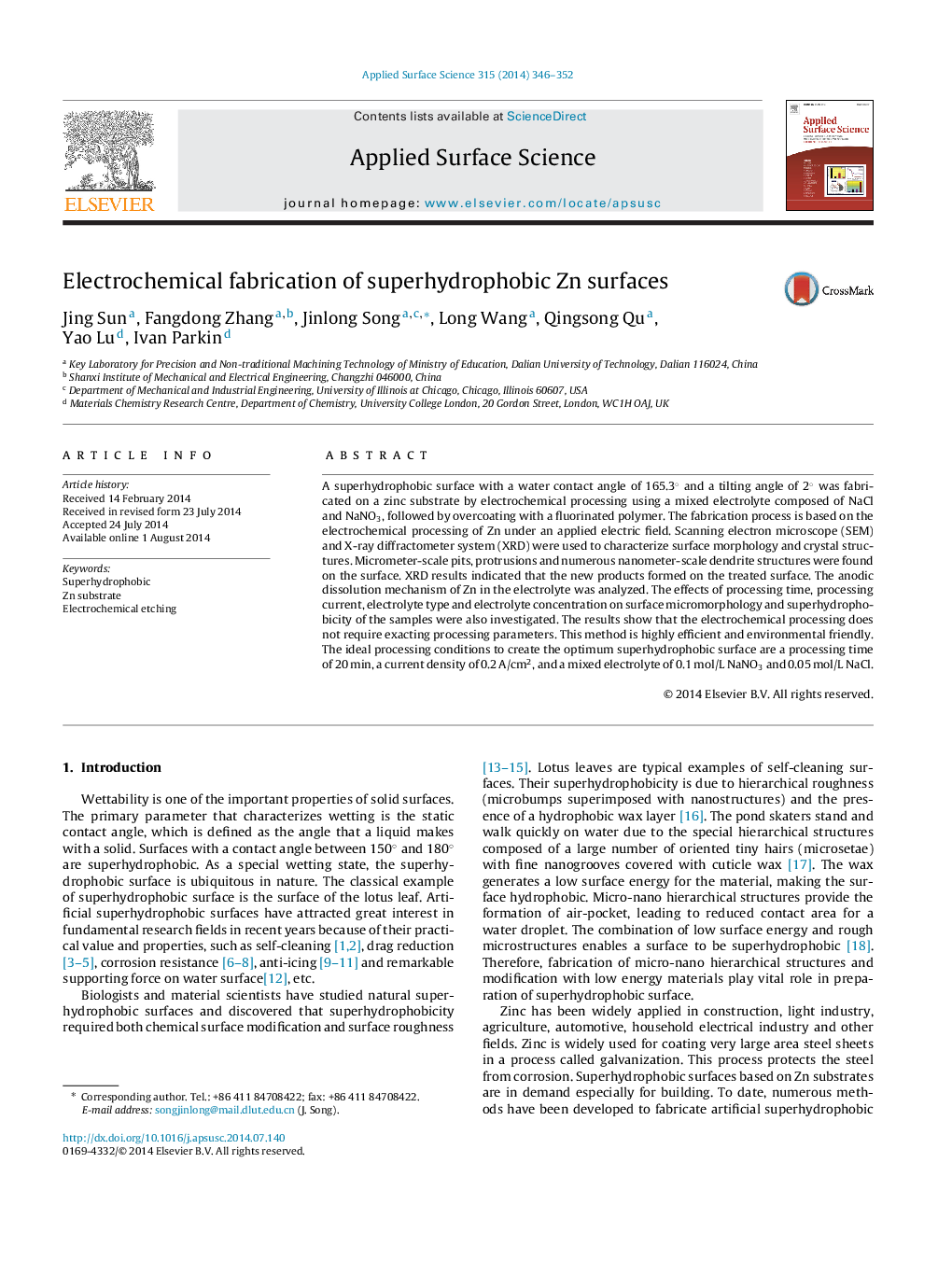| Article ID | Journal | Published Year | Pages | File Type |
|---|---|---|---|---|
| 5351166 | Applied Surface Science | 2014 | 7 Pages |
Abstract
A superhydrophobic surface with a water contact angle of 165.3° and a tilting angle of 2° was fabricated on a zinc substrate by electrochemical processing using a mixed electrolyte composed of NaCl and NaNO3, followed by overcoating with a fluorinated polymer. The fabrication process is based on the electrochemical processing of Zn under an applied electric field. Scanning electron microscope (SEM) and X-ray diffractometer system (XRD) were used to characterize surface morphology and crystal structures. Micrometer-scale pits, protrusions and numerous nanometer-scale dendrite structures were found on the surface. XRD results indicated that the new products formed on the treated surface. The anodic dissolution mechanism of Zn in the electrolyte was analyzed. The effects of processing time, processing current, electrolyte type and electrolyte concentration on surface micromorphology and superhydrophobicity of the samples were also investigated. The results show that the electrochemical processing does not require exacting processing parameters. This method is highly efficient and environmental friendly. The ideal processing conditions to create the optimum superhydrophobic surface are a processing time of 20 min, a current density of 0.2 A/cm2, and a mixed electrolyte of 0.1 mol/L NaNO3 and 0.05 mol/L NaCl.
Related Topics
Physical Sciences and Engineering
Chemistry
Physical and Theoretical Chemistry
Authors
Jing Sun, Fangdong Zhang, Jinlong Song, Long Wang, Qingsong Qu, Yao Lu, Ivan Parkin,
